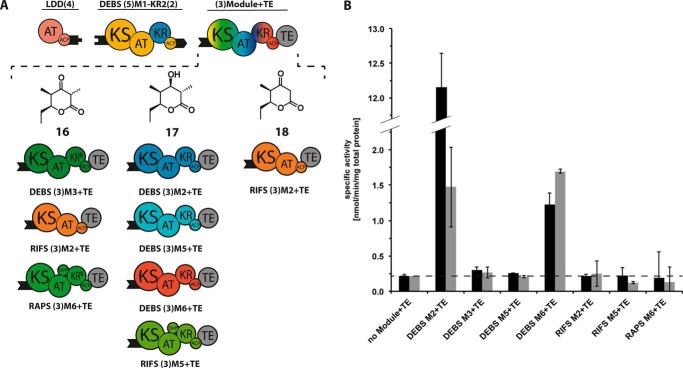FIGURE 9.
Influence of substrate-KS recognition on chimeric PKSs. A, chimeric bimodular PKSs harboring the DEBS M1-KR2 mutant. Each PKS included LDD(4) and DEBS (5)M1-KR2(2) in combination with (3)Module+TE as the variable acceptor. The predicted triketide products 16–18 generated in the presence of propionyl-CoA, methylmalonyl-CoA (and malonyl-CoA, in the case of RIFS M2+TE), and NADPH, are shown for each chimeric module pair. B, turnover rates of bimodular constructs consisting of DEBS LDD, DEBS M1 plus the designated acceptor module (black bars) and turnover rates of the same systems with DEBS M1-KR2 mutant (gray bars) in place of DEBS M1. All initial rate data were obtained at individual PKS protein concentrations of 4 μm and non-limiting concentrations of propionyl-CoA, methylmalonyl-CoA (and malonyl-CoA, in the case of RIFS M2+TE), and NADPH. The dashed line indicates the threshold rate of NADPH consumption in the absence of the chimeric module. Error bars indicate averages of three measurements. Numerical data from this bar graph are summarized in supplemental Table S8.

